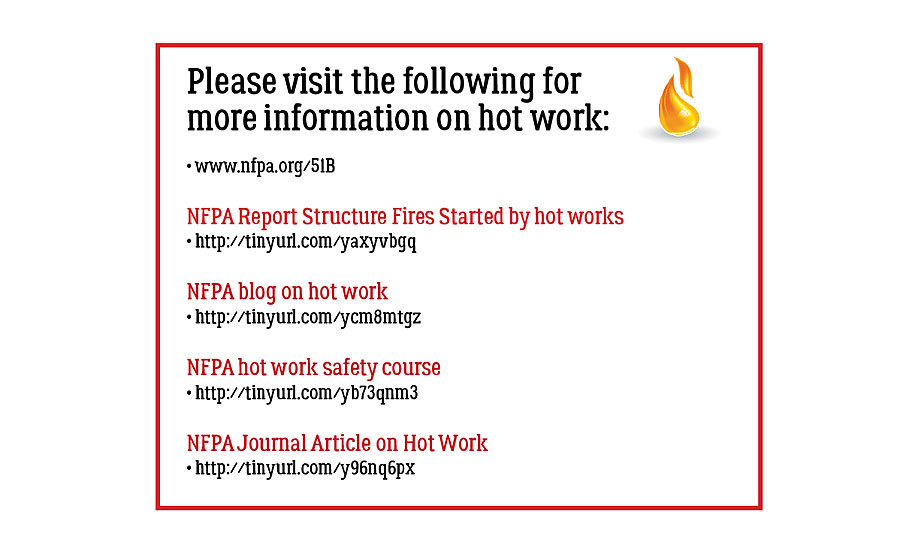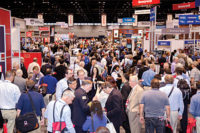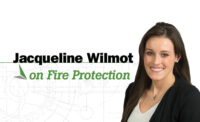One of the most difficult challenges in the fire protection industry is learning from disasters. In many cases, it is not until tragedy strikes that we can apply the lessons learned to ensure the same incident is not repeated.
Unfortunately, a new level of awareness and understanding doesn’t guarantee similar tragedies won’t strike again. Hot work fires often reflect mistakes and mishaps that continue to occur despite the lessons learned from previous incidents.
According to NFPA’s 2016 report, “Structure Fires Started by Hot Work”, U.S. fire departments responded to an annual average of 4,440 structure fires involving hot work between 2010 and 2014. These fires resulted in an average of 12 civilian deaths, 208 civilian injuries and $287 million in direct property damage each year. NFPA 51B: Standard for Fire Prevention During Welding, Cutting, and Other Hot Work, covers the provisions to prevent injury, loss of life, and loss of property from fire or explosion as a result of hot work and has been available since the 1960s.
The lessons we have learned from hot work fires need to be better applied. Here is how NFPA 51B can help you the next time you are involved in any hot work:
-
NFPA 51B provides the minimum requirements for all persons who manage, request, authorize, perform or supervise hot work, and while welding is commonly considered as the primary form of hot work, hot work activities include cutting, grinding, soldering, brazing, heat treating, hot riveting, thawing pipe, powder-driven fasteners, torch-applied roofing, drilling and tapping.
-
NFPA 51B defines hot work as work involving burning, welding or a similar operation that is capable of initiating fires or explosions. While many associate welding as the primary hot work activity, hot work covers all activities involving flame, spark production and heat. However, the standard recognizes that not all hot work equipment and environments in which hot work is being conducted carries the same level of risk. NFPA’s report supports this concept.
The leading types of hot work equipment involved in structure fires are different in homes than in non-home properties. According to the NFPA hot work report, welding torches were involved in 1/3 of all hot work structure fires. Fifty-eight percent of all hot work fires occurred in non-home properties. In these fires, welding torches were the leading type of hot work equipment (34%) involved. In the 42% of hot work fires that occurred in home properties, soldering was the type of hot work equipment involved.
The people
The hot work safety team outlined in NFPA 51B includes the permit authorizing individual (PAI), hot work operator and a fire watch.
The PAI is designated by management to authorize hot work and require a fire watch, if necessary. This person could be the supervisor, property owner or representative who needs to be trained in health and safety issues, and is familiar with the types of hot work taking place. The PAI issues internal permits, which does not replace the permit that might be required by the Authority Having Jurisdiction (AHJ). For example, consider a typical college campus where hot work could take place frequently. In this situation rather, than the college requesting the jurisdiction to issue a permit every time hot work takes place on campus, one permit is issued for the year from the AHJ. The PAI then is responsible for issuing internal permits every time hot work is conducted on campus based on conditions that are current and specific to the job scheduled to be performed.
The hot work operator is responsible for physically performing the hot work. This person should only accept jobs they are familiar with and have been properly trained for. He or she should not start the work until after approval from the PAI (and AHJ where applicable), when the permit has been completed, posted and matches the hot work operation required for the job. In addition, the hot work operator must witness and verify the atmospheric testing, as well as continue to monitor the environment for the duration of the hot work as conditions can change.
In addition to monitoring for fires during and after hot work is completed, a fire watch also has the responsibility to review the permit, keep people a safe distance away from the hot work and identify if conditions are changing (i.e. wind direction/speed). This person should be trained in the hazards of hot work; he or she also should be familiar with the work site; and should have a means of notification in the event of an emergency.
Overall, it’s imperative that everyone on the hot work safety team recognizes they are each responsible for ensuring the work is being performed safely.

The paper and the process
When is a hot work permit required? The answer to the question depends on a variety of factors. Each jurisdiction has its own provisions that need to be followed. NFPA 51B provides a Hot Work Permit Decision Tree to assist the PAI in determining if an internal hot work permit is necessary. The Decision Tree considers whether a safer non-hot work alternative exists or whether the hot work can take place in a designated area designed that is approved for hot work. This decision tree allows the PAI to evaluate each area and follow methods to minimize potential hazards. Again, this internal permit is different than the permit that may be required by your jurisdiction.
NFPA 51B defines three types of permissible areas. I like to think of the three areas as a traffic light:
- A “Designated Area” (green light) is a specific location designed and approved for hot work operations such as a maintenance shop;
- “Permit Required Area” (yellow light) is any location other than a designated area that is approved for hot work and made fire-safe by removing or protecting combustibles from ignition sources; and
- “Nonpermissible Areas” (red light) are those areas not authorized by management, areas where the fire protection from sprinklers is impaired or where explosive atmospheres exist.
If hot work cannot be completed in a designated area, then the safeguards involve keeping the ignition source (the hot work) and possible fuels separated. The first option offered by the standard is for the hot work to be done at least 35 ft. from combustible materials; which also is known as the “Sphere of Influence.” In situations where the 35-ft. separation can’t be met (for example, if the hot work is taking place in a crawlspace), then an alternative approach is to physically isolate the hot work operation from adjacent combustible occupancies or construction using a listed welding blanket, curtain or pad.
Is a fire watch necessary? Again, it depends. Check with your AHJ to determine if a fire watch is required in your jurisdiction. A Fire Watch Decision Tree also is in provided NFPA 51B to assist in a site assessment to determine if a fire watch is needed and if more than one fire watch is needed. It is important to remember the use of a fire watch is in addition to the other safeguards described in this article, not instead of.
Following the requirements specified in NFPA 51B can help to prevent future hot work tragedies.
This article was originally titled “Hot work has many lessons that should be learned again” in the August 2017 print edition of PM Engineer.





